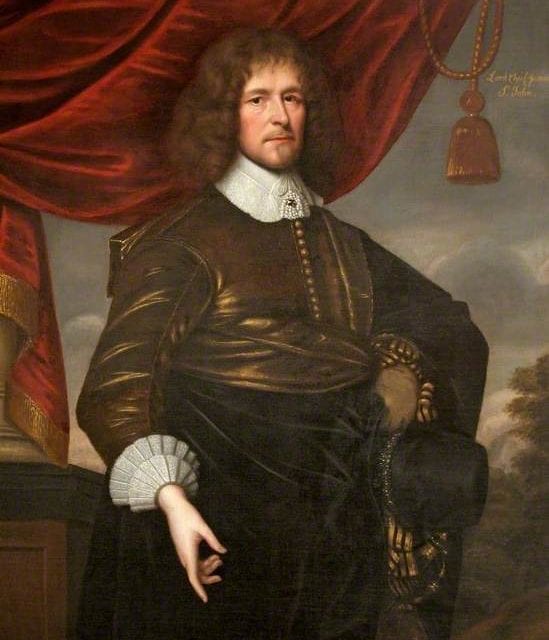

For those who really like a challenge, try following the intermarriages between the St John, Cromwell and Bernard families.
Elizabeth St John was born in c1638. Her father was the celebrated Oliver St John, Lord Chief Justice of the Common Pleas who had successfully defended John Hampden’s refusal to pay Charles I’s contentious Ship Tax. Her mother was Elizabeth Cromwell, Oliver St John’s second wife and the daughter of Henry Cromwell of Upwood, Oliver Cromwell’s uncle. Elizabeth’s elder siblings by Oliver St John’s first wife Johanna Altham were brother Francis and sisters Johanna and Catherine, who married their cousins Walter and Henry St John of Lydiard Tregoze.
Oliver St John commissioned the construction of the opulent Thorpe Hall at Longthorpe in Peterborough between 1653-1656, said by 17th century diarist John Evelyn to have been built out of the ruins of the Bishop’s Palace and cloisters. It’s doubtful that Elizabeth spent much time at her father’s new home as she was married off in 1655 while still in her teens.
The parish registers at St Andrew’s, Enfield record that ‘The trulie worthy John Bernarde Esq of Huntingdon and Mrs Eliz. St John, d to the rt. hon. Oliver St John, lord chiefe justice of the Common Pleas, were married before her said father, and by him declared man and wife, February 26, 1655, coram testibus non paucis venerabilibus egreglis et fide dignis.’
The newly weds returned to Sir John’s estate at Brampton, two miles from Huntingdon in Cromwell heartland. Described as a domineering landlord, Sir John apparently drove the smaller freeholders off his land. He served as MP for Huntingdon in the First Protectorate Parliament and was re-elected in 1656 and 1659. He also served in the 1660 Convention parliament.
Although her two elder sisters married when Elizabeth was a child, kinship ties were strong following the tumultuous times of the civil war and Johanna was particularly close to her younger sister. Elizabeth gave birth to nine children but only three survived to adulthood and in 1663 Johanna was in attendance when the pregnant Elizabeth took ill and miscarried. Johanna writes from Elizabeth’s home at Brampton to Thomas Hardyman, her steward at Lydiard Park – ‘My sis Bernard has her Ague stil wch has caused her to miscary of her 5 girl 3 weeks before her time.’
Sadly this is the last reference we have to Elizabeth and no further trace of her can, at present, be found. Elizabeth had a fifth daughter whom she named Johanna after her much loved elder sister. She must have therefore died after 1664 and before Sir John’s second marriage in 1670.
But just to complicate the ‘who married whom’ saga. Elizabeth’s grandson Sir John Bernard 4th Baronet married Mary St John, the daughter of her brother Francis. And I’ve barely scratched the surface of the Cromwellian connections.